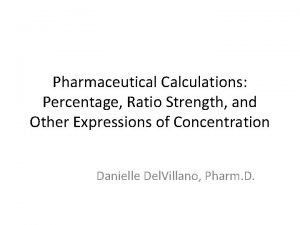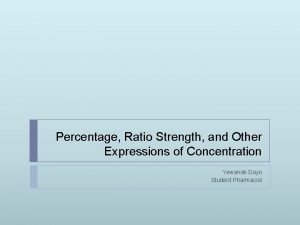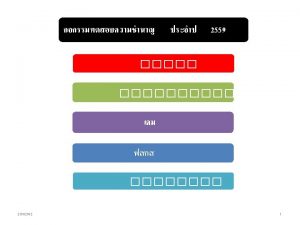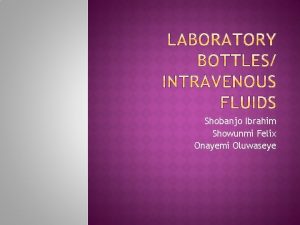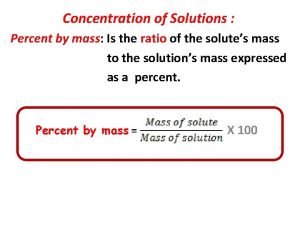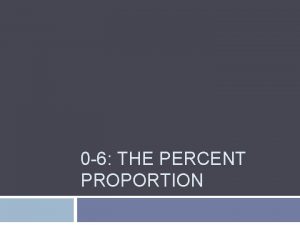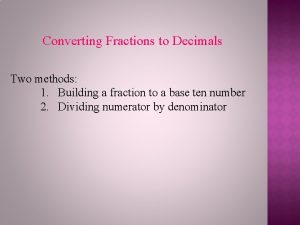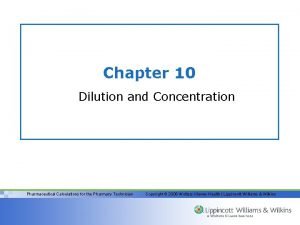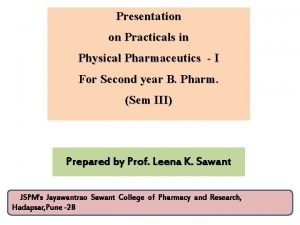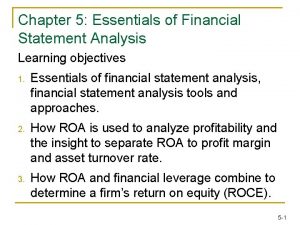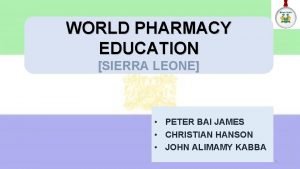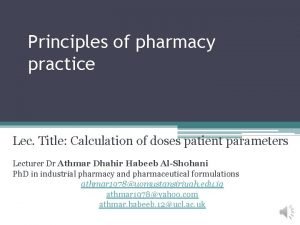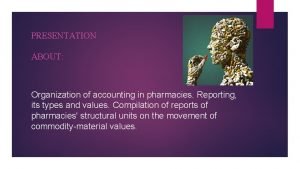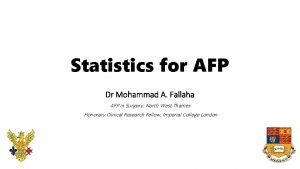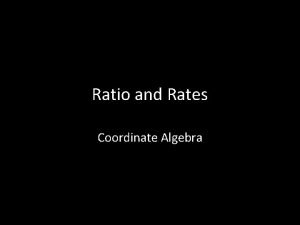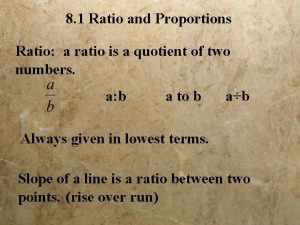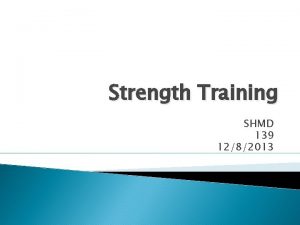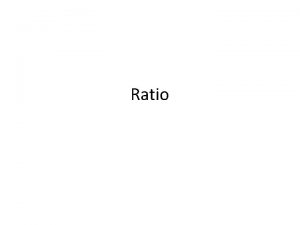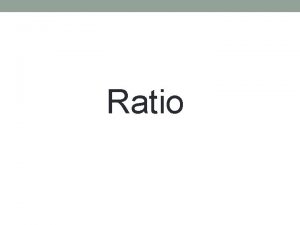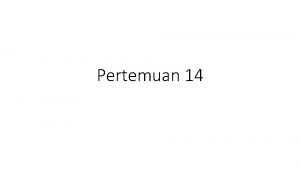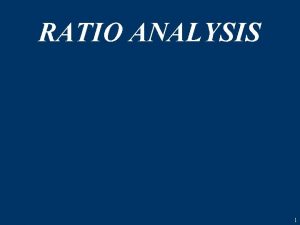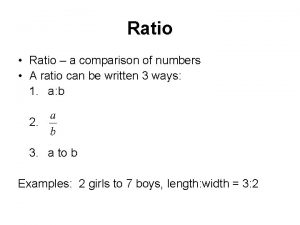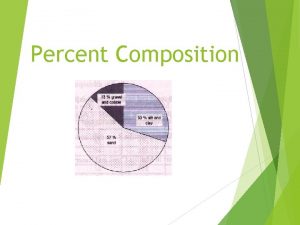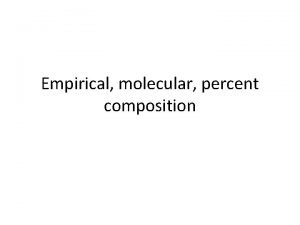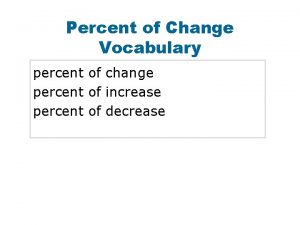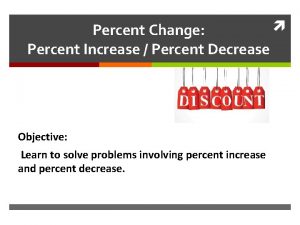Principles of pharmacy practice Percent and ratio strength
























- Slides: 24

Principles of pharmacy practice Percent and ratio strength calculations

Percent and ratio strength calculations Percentage • The term percent and its corresponding sign (%) mean ‘‘by the hundred’’ or ‘‘in a hundred, ’’ and percentage means ‘‘rate per hundred’’ , so 50 percent (or 50%) and a percentage of 50 are equivalent expressions. • A percent may also be expressed as a ratio, represented as a common or decimal fraction. For example, 50% means 50 parts in 100 of the same kind, and may be expressed as 50⁄100 or 0. 50 • For the purposes of computation, percents are usually changed to equivalent decimal fractions. This change is made by dropping the percent sign (%) and dividing the expressed numerator by 100. Thus, 12. 5% = 12. 5/100 = 0. 125

• The percentage concentrations of active and inactive constituents in various types of pharmaceutical preparations are defined as follows by the United States Pharmacopeia 1 • Percent weight-in-volume (w/v) expresses the number of grams of a constituent in 100 m. L of solution or liquid preparation and is used regardless of whether water or another liquid is the solvent or vehicle. Expressed as: % w/v. • Percent volume-in-volume (v/v) expresses the number of milliliters of a constituent in 100 m. L of solution or liquid preparation. Expressed as: % v/v. • Percent weight-in-weight (w/w) expresses the number of grams of a constituent in 100 g of solution or preparation. Expressed as: % w/w. • The term percent, or the symbol %, when used without qualification means: • for solutions or suspensions of solids in liquids, percent weight-in-volume; • for solutions of liquids in liquids, percent volume-in-volume; • for mixtures of solids or semisolids, percent weight-in-weight

Percentage weight in volume • weight-in-volume expressions, the ‘‘correct’’ strength of a 1% (w/v) solution or other liquid preparation is defined as containing 1 g of constituent in 100 m. L of product • Multiply the required number of milliliters by the percentage strength, expressed as a decimal, to obtain the number of grams of solute or constituent in the solution or liquid preparation. • The volume, in milliliters, represents the weight in grams of the solution or liquid preparation as if it were pure water. Volume (m. L, representing grams) x % (expressed as a decimal) = grams (g) of solute or constituent

• How many grams of dextrose are required to prepare 4000 m. L of a 5% solution? 4000 m. L represents 4000 g of solution 5% = 0. 05 4000 g x 0. 05 = 200 g, answer. • How many grams of potassium permanganate should be used in compounding the following prescription? Potassium Permanganate Purified Water ad Sig. as directed. 250 m. L represents 250 g of solution 0. 02% = 0. 0002 250 g x 0. 0002 = 0. 05 g, answer 0. 02% 250 m. L

• How many grams of aminobenzoic acid should be used in preparing 8 fluidounces of a 5% solution in 70% alcohol? 8 fl. oz. = 8 x 30 m. L = 240 m. L represents 240 g of solution 5% = 0. 05 240 g x 0. 05 =12 g, answer.

Percentage volume in volume In preparing 250 m. L of a certain lotion, a pharmacist used 4 m. L of liquefied phenol. What was the percentage (v/v) of liquefied phenol in the lotion?



Percent weight in weight


Calculating Percentage Strength Weight-in-Weight If the weight of the finished solution or liquid preparation is not given when calculating its percentage strength, other data must be supplied from which it may be calculated: the weights of both ingredients, for instance, or the volume and specific gravity of the solution or liquid preparation. • If 1500 g of a solution contains 75 g of a drug substance, what is the percentage strength (w/w) of the solution?







• The concentrations of weak solutions are frequently expressed in terms of ratio strength. Because all percentages are a ratio of parts per hundred When a ratio strength, for example, 1: 1000, is used to designate a concentration, it is to be interpreted as follows • For solids in liquids 1 g of solute or constituent in 1000 m. L of solution or liquid preparation. • For liquids in liquids 1 m. L of constituent in 1000 m. L of solution or liquid preparation. • For solids in solids 1 g of constituent in 1000 g of mixture. • The ratio and percentage strengths of any solution or mixture of solids are proportional, and either is easily converted to the other by the use of proportion.



Occasionally, pharmacists, particularly those practicing in patient care settings, need to convert rapidly product concentrations expressed as percentage strength, ratio strength, or as grams per liter (as in IV infusions) to milligrams per milliliter (mg/m. L)


The strengths of very dilute solutions are commonly expressed in terms of parts per million (ppm) or parts per billion (ppb), i. e. , the number of parts of the agent per 1 million or 1 billion parts of the whole
 Ratio strength calculator
Ratio strength calculator Express 5 ppm of iron in water in percentage strength.
Express 5 ppm of iron in water in percentage strength. How to calculate valid percent
How to calculate valid percent Yield and tensile strength
Yield and tensile strength Half strength darrow's solution composition
Half strength darrow's solution composition Percent by mass
Percent by mass 0.(6) as a percent
0.(6) as a percent Write the ratio as a percent. 160:400
Write the ratio as a percent. 160:400 Pharmacy dilution formula
Pharmacy dilution formula 2-10 practice change expressed as a percent
2-10 practice change expressed as a percent High strength to weight ratio
High strength to weight ratio High strength to weight ratio
High strength to weight ratio Best bridge design for weight
Best bridge design for weight What is cst method in physical pharmaceutics
What is cst method in physical pharmaceutics Acid test ratio and quick ratio
Acid test ratio and quick ratio Phenotypic ratio of dihybrid cross
Phenotypic ratio of dihybrid cross Current ratio and quick ratio
Current ratio and quick ratio Consultation skills for pharmacy practice
Consultation skills for pharmacy practice Peter bai
Peter bai Consultation skills for pharmacy practice
Consultation skills for pharmacy practice Pharmacy clinical pearls
Pharmacy clinical pearls Gpp in pharmacy
Gpp in pharmacy 7 principles of pharmacy
7 principles of pharmacy Pharmacy accounting principles
Pharmacy accounting principles Dr fallaha
Dr fallaha
